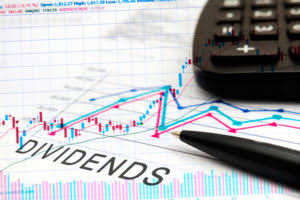
The value of $60.2 billion in shareholders’ equity represents the amount left for stockholders if Apple liquidated all of its assets and paid off all of its liabilities. Investors contribute their share of paid-in capital as stockholders, which is the basic source of total stockholders’ equity. The amount of paid-in capital from an investor is a factor in determining his/her ownership percentage. Current liabilities are debts typically due for repayment within one year, including accounts payable and taxes payable. Long-term liabilities are obligations that are due for repayment in periods longer than one year, such as bonds payable, leases, and pension obligations.

Explore Business Topics
If used in conjunction with other tools and metrics, the investor can accurately analyze the health of an organization. Therefore, always consult with accounting and tax professionals for assistance with your specific circumstances. At a minimum of once per year, companies must prepare financial statements. In addition companies often prepare quarterly and monthly financial statements which are referred to as interim financial statements.
IFRS and US GAAP in Financial Statements
Since revenues ($85,000) are greater than expenses ($79,200), Cheesy Chuck’s has a net income of $5,800 for the month of June. Now it is time to bake the cake (i.e., prepare the financial statements). We have all of the ingredients (elements of the financial statements) ready, so let’s now return to the financial statements themselves. Let’s use as an example a fictitious company named Cheesy Chuck’s Classic Corn. This company is a small retail store that makes and sells a variety of gourmet popcorn treats. It is an exciting time because the store opened in the current month, June.
Who uses a statement of shareholder equity?

Because Cheesy Chuck’s tracks different types of expenses, we need to add the amounts to calculate total expenses. If you added correctly, you get total expenses for the month of June of $79,200. The final step to create the income statement is to determine the amount of net income or net loss for Cheesy Chuck’s.
The balance sheet is going to include assets, contra assets, liabilities, and stockholder equity accounts, including ending retained earnings and common stock. Remember that a company must present an income statement, balance sheet, statement of retained earnings, and statement of cash flows. However, it is also necessary to present additional information about changes in other equity accounts. This may be done by notes to the financial statements or other separate schedules. However, most companies will find it preferable to simply combine the required statement of retained earnings and information about changes in other equity accounts into a single statement of stockholders’ equity. It gives shareholders, investors and the company’s owner a true picture of how the business is performing and is usually measured monthly, quarterly or annually.
Everything You Need to Know About the Statement of Shareholder Equity
Accounts receivable represents goods or services that have already been sold and will typically be paid/collected within thirty to forty-five days. Inventory is less liquid than accounts receivable because the product must first be sold before it generates cash (either the statement of stockholders equity should be prepared through a cash sale or sale on account). The third financial statement created is the balance sheet, which shows the company’s financial position on a given date. There are ten elements of the financial statements, and we have already discussed most of them.
- If you added correctly, you get total expenses for the month of June of $79,200.
- To summarize and review this unit, we will look at how each item is reported in the Stockholder’s Equity section of the balance sheet.
- Adam Hayes, Ph.D., CFA, is a financial writer with 15+ years Wall Street experience as a derivatives trader.
- They represent returns on total stockholders’ equity reinvested back into the company.
- The statement of cash flows highlights the major reasons for the changes in a corporation’s cash and cash equivalents from one balance sheet date to another.
Cash Flows from Financing Activities
This ending equity balance can then be cross-referenced with the ending equity on the balance sheet to make sure it is accurate. To summarize and review this unit, we will look at how each item is reported in the Stockholder’s Equity section of the balance sheet. Cash Dividends and Stock Dividends are not reported on the balance sheet.

- The balance sheet is going to include assets, contra assets, liabilities, and stockholder equity accounts, including ending retained earnings and common stock.
- The statement of retained earnings is prepared second to determine the ending retained earnings balance for the period.
- The statement of shareholder equity also shows whether you’re likely to get approved for a business loan, whether there’s value in selling the business and whether it makes sense for investors to contribute.
- In most cases you want to compare a company with its past balance sheet information.
- Cheesy Chuck’s has only two assets, and one of the assets, Equipment, is a noncurrent asset, so the value of current assets is the cash amount of $6,200.
- The statement of retained earnings (which is often a component of the statement of stockholders’ equity) shows how the equity (or value) of the organization has changed over a period of time.
